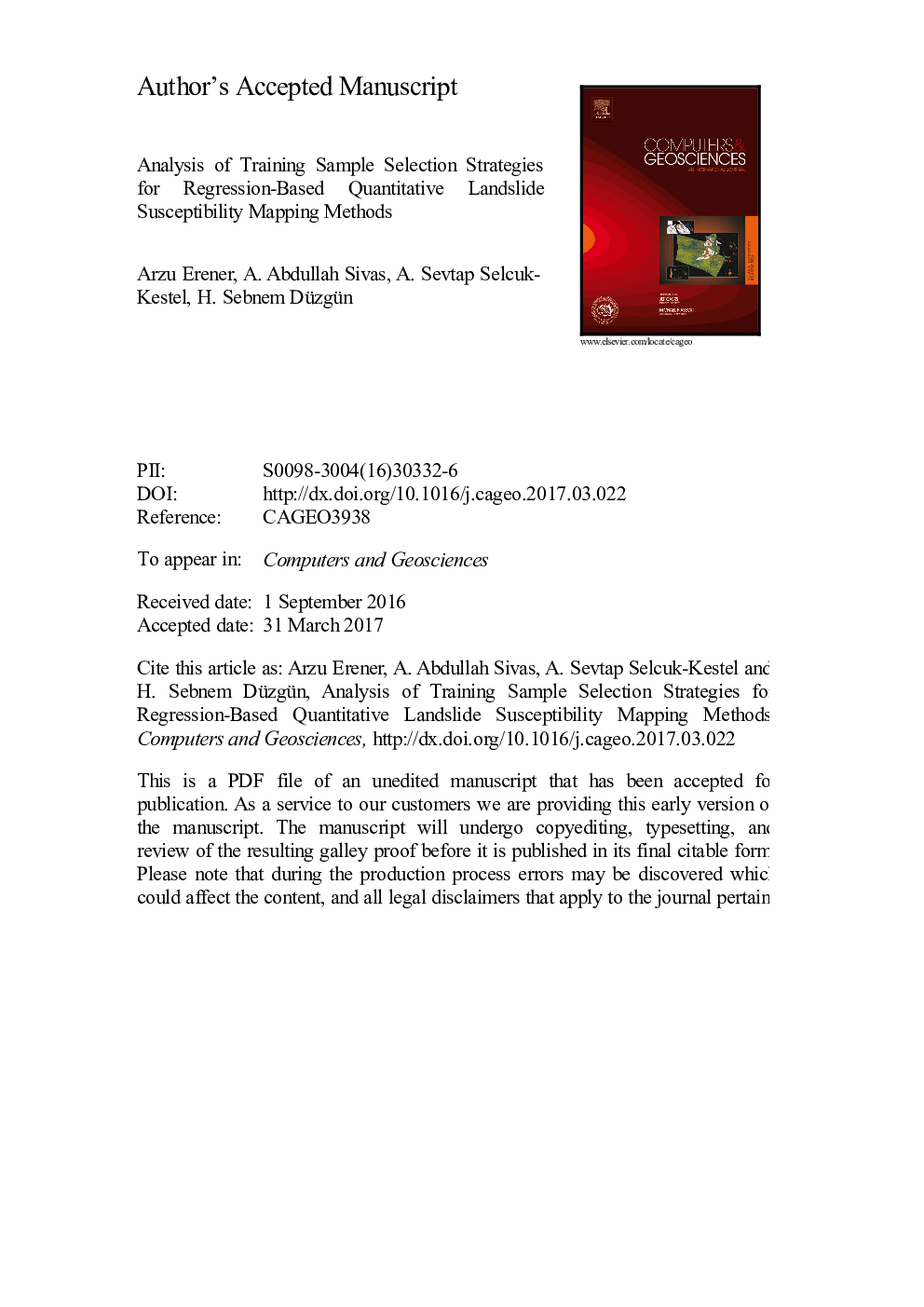| کد مقاله | کد نشریه | سال انتشار | مقاله انگلیسی | نسخه تمام متن |
|---|---|---|---|---|
| 4965259 | 1448280 | 2017 | 31 صفحه PDF | دانلود رایگان |
عنوان انگلیسی مقاله ISI
Analysis of training sample selection strategies for regression-based quantitative landslide susceptibility mapping methods
ترجمه فارسی عنوان
تجزیه و تحلیل استراتژی های انتخاب نمونه های آموزشی برای روش های نقشه برداری مبتنی بر رگرسیون مبتنی بر ریسک پذیری
دانلود مقاله + سفارش ترجمه
دانلود مقاله ISI انگلیسی
رایگان برای ایرانیان
کلمات کلیدی
موضوعات مرتبط
مهندسی و علوم پایه
مهندسی کامپیوتر
نرم افزارهای علوم کامپیوتر
چکیده انگلیسی
All of the quantitative landslide susceptibility mapping (QLSM) methods requires two basic data types, namely, landslide inventory and factors that influence landslide occurrence (landslide influencing factors, LIF). Depending on type of landslides, nature of triggers and LIF, accuracy of the QLSM methods differs. Moreover, how to balance the number of 0 (nonoccurrence) and 1 (occurrence) in the training set obtained from the landslide inventory and how to select which one of the 1's and 0's to be included in QLSM models play critical role in the accuracy of the QLSM. Although performance of various QLSM methods is largely investigated in the literature, the challenge of training set construction is not adequately investigated for the QLSM methods. In order to tackle this challenge, in this study three different training set selection strategies along with the original data set is used for testing the performance of three different regression methods namely Logistic Regression (LR), Bayesian Logistic Regression (BLR) and Fuzzy Logistic Regression (FLR). The first sampling strategy is proportional random sampling (PRS), which takes into account a weighted selection of landslide occurrences in the sample set. The second method, namely non-selective nearby sampling (NNS), includes randomly selected sites and their surrounding neighboring points at certain preselected distances to include the impact of clustering. Selective nearby sampling (SNS) is the third method, which concentrates on the group of 1's and their surrounding neighborhood. A randomly selected group of landslide sites and their neighborhood are considered in the analyses similar to NNS parameters. It is found that LR-PRS, FLR-PRS and BLR-Whole Data set-ups, with order, yield the best fits among the other alternatives. The results indicate that in QLSM based on regression models, avoidance of spatial correlation in the data set is critical for the model's performance.
ناشر
Database: Elsevier - ScienceDirect (ساینس دایرکت)
Journal: Computers & Geosciences - Volume 104, July 2017, Pages 62-74
Journal: Computers & Geosciences - Volume 104, July 2017, Pages 62-74
نویسندگان
Arzu Erener, A. Abdullah Sivas, A. Sevtap Selcuk-Kestel, H. Sebnem Düzgün,
